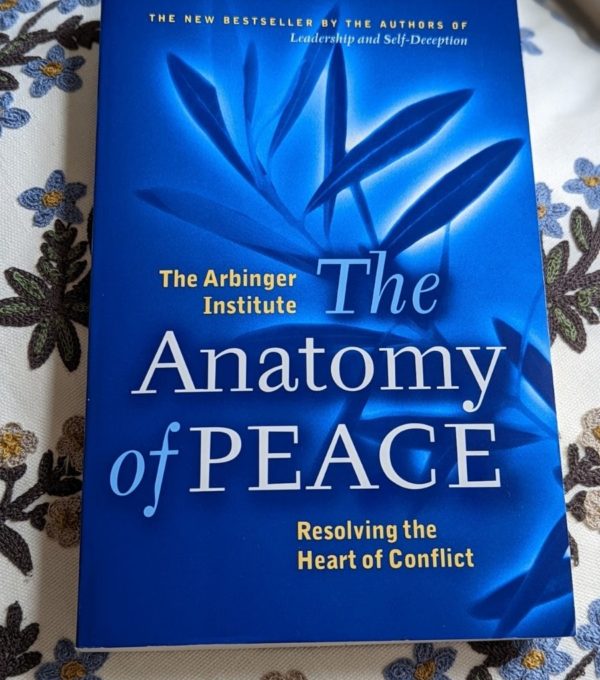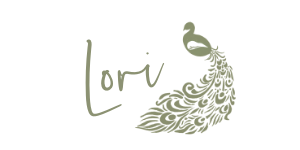
After stepping away for a bit, we’re getting back to it at The Roost. Truth be told, Farrah and I have been wrestling with how to share content that may appear frivolous in light of these heavy times. In the span of a couple weeks, it seems the world has transitioned out of a global pandemic into a full-blown international conflict. It’s heartbreaking to see so many innocent people, especially children, caught in the cross hairs of war. We’re praying for peace and better days ahead.
We’re also reminding ourselves that it’s precisely times like these that we need to seek joy the most. Lest I spend my days glued to the news, I’ve been forcing myself to take breaks and recall what I committed to in Five Ways I’m Pursuing Joyful Living. I’m not in a position to eradicate the world’s troubles, but I can play a part in resolving the conflicts that arise within my own circles.
A Book Recommendation for Resolving Conflict
Today I’ve got a recommendation that’s been helping me work towards greater peace and tranquility at home and beyond. One of those rare books that I think everyone should read, The Arbinger Institute’s The Anatomy of Peace is changing how I perceive and handle conflict. It’s the story of a disparate group of parents who are struggling with their children and the two reconciled enemies who teach them how to find peace in the face of war. Despite having lost their fathers at the hands of the other’s ethnic cousins, Yusuf al-Fakah (an Arab) and Avi Rozen (a Jew) managed to embrace peace and go on to coach others how to turn conflict into camaraderie. This book should be required reading for every world leader as politicians and parents alike stand to benefit from its lessons!
I’m going to keep it real and tell you that I picked up The Anatomy of Peace a couple weeks ago after a particularly challenging morning in our household. Handling conflict doesn’t come easy for me, and I’ve got a tendency to give in to frustration when things don’t go my way. Taking deep breaths and telling myself to “choose joy” can only go so far before I’m left feeling like Seinfeld’s Frank Costanza shouting “Serenity Now!” Reading the Arbinger Institute’s book has given me a fresh perspective that’s making a difference in my relationships. The principles shared in The Anatomy of Peace seem more applicable than ever as we’ve become increasingly divided here at home and abroad. Below are a few takeaways:

1. Change Ourselves Before Seeking to Change Others – So often conflicts stem from our frustrations with people not behaving the way we think they should. Instead of focusing all of our energy on reacting to their problematic behavior, we should examine our role in the situation. We need to devote most of our efforts to “helping things go right.” This simple shift in mindset changes our attention from the “problem” to our ability to foster solutions.
2. Cultivate a “Heart at Peace” Versus a “Heart at War” – Our attitudes towards others can be just as crucial, if not more so, than our behaviors. The right actions on our part fall short when our hearts remain at war. Having a heart at peace happens when we truly desire the best for others as much as for ourselves.
3. See Others as People Instead of Obstacles – This one sounds simple enough. But, how often do we fall victim to blaming others when they don’t act according to our wishes? Achieving true and lasting peace is nearly impossible with a mindset that views others as obstacles to our goals and desires.
The Anatomy of Peace offers a dynamic manual for abiding by the Golden Rule. I found it easy to recognize myself in the struggling parents who also happened to be struggling in their marriages, jobs and communities. Whether you’re seeking to improve relationships or you’re looking for proven strategies to resolve conflict, you may want to consider picking up a copy. This world on fire could certainly use a healthy dose of peace and tranquility these days. Perhaps it can start with us?


R. Macey
Excellent post. It is crucial in this terrifying time that we examine our own behavior first, readjust our mindset to reflect and reset our thoughts, words and deeds regarding the smallest picture and the big picture right in front of us. We must examine our conscience, learn from others and then do our best to filter, function and facilitate. Thank you for your perspective and recommendations.